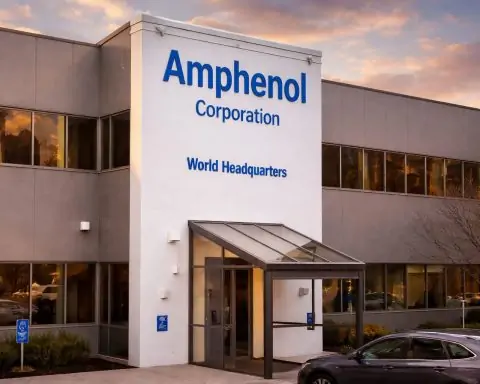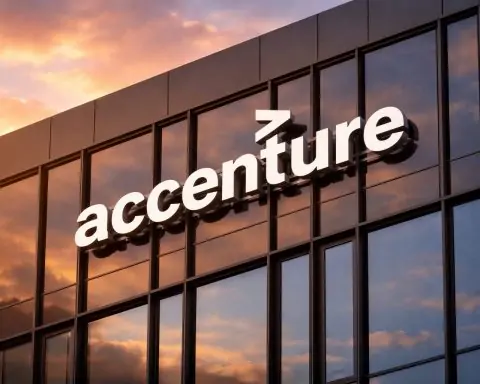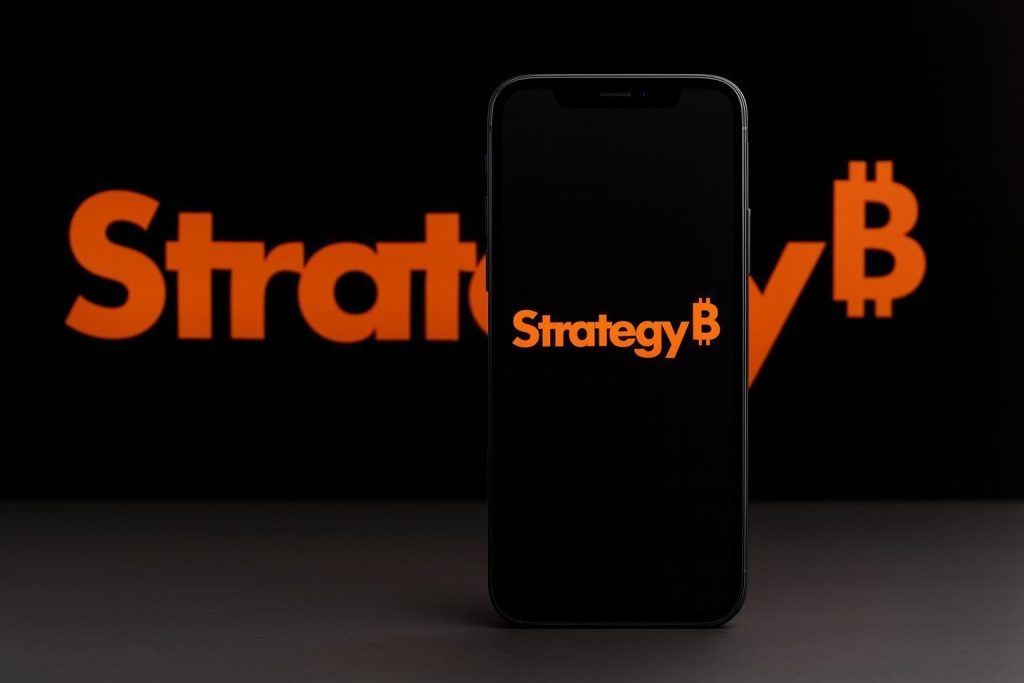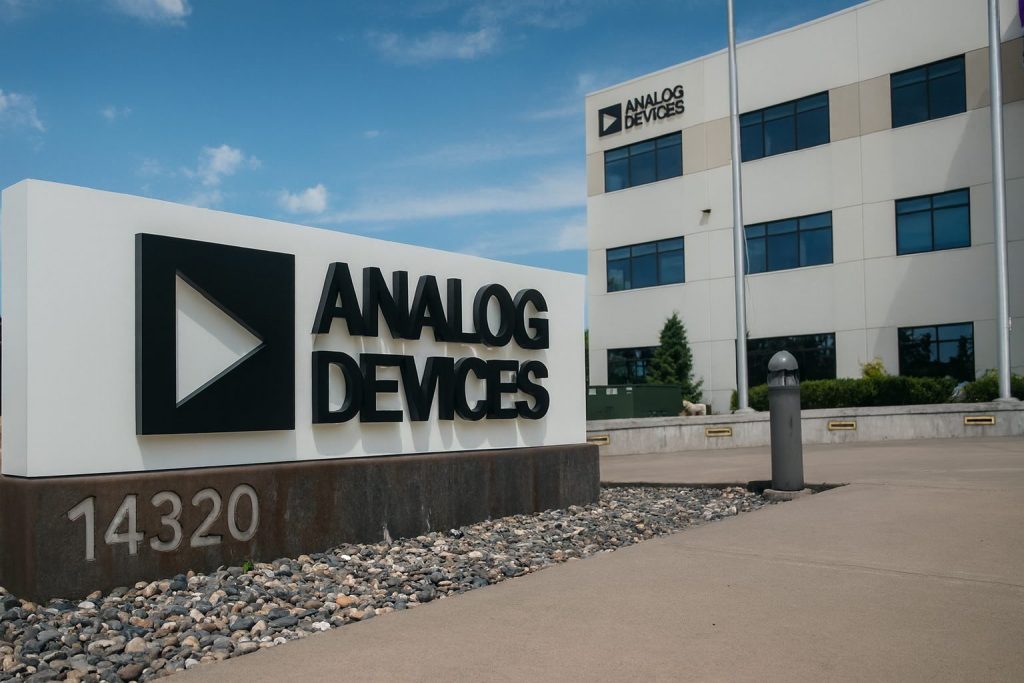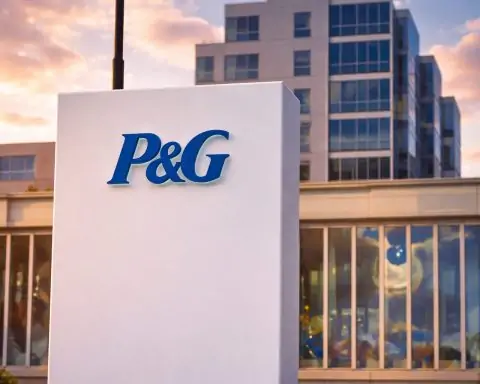Procter & Gamble Co. (NYSE: PG) ended Friday, November 28, 2025, trading just above $148 per share, with a closing price of $148.16, down a modest 0.06% on the day. The stock traded between $147.18 and $148.71, within a 52‑week range of roughly $144.09 to $180.43. [1]
Despite a calm session, today’s newsflow around PG stock is anything but quiet: a series of fresh regulatory filings shows large institutional investors building sizable positions, while the company continues to digest a big restructuring plan, a CEO transition, and a series of legal and consumer headwinds.
Below is a detailed breakdown of what moved around Procter & Gamble stock heading into the weekend — and what it could mean for investors watching PG.
PG Stock Today: Price, Performance and Valuation
At the close of November 28, 2025, PG’s trading profile looks like a textbook defensive blue chip that has fallen out of favor over the last year:
- Closing price: $148.16
- Day’s range: $147.18 – $148.71
- Average daily volume: ~4.6 million shares
- 52‑week range: about $144.09 (low) to $180.16 (high) [2]
Performance snapshot
Different data providers calculate returns slightly differently, but they tell a consistent story: PG has lagged the broader market in 2025.
- Year‑to‑date price performance: roughly ‑11% (from around $167–168 at end‑2024 to ~$148 now). [3]
- 1‑year total return: approximately ‑15%, including dividends. [4]
- 5‑year total return: about +21%, meaning $1,000 invested five years ago would be worth roughly $1,212 today (with dividends reinvested). [5]
This contrasts with the S&P 500, which has posted solid gains this year, leaving PG looking more like a defensive laggard than a momentum play.
Valuation and balance sheet
Fresh institutional reports and ownership summaries highlight a fairly consistent valuation picture: [6]
- Market cap: about $347 billion
- Price/earnings (P/E): ~21.7× trailing earnings
- PEG ratio: ~3.9
- Beta: ~0.36 (well below 1, confirming low volatility)
- Leverage: debt‑to‑equity around 0.46, with a current ratio of 0.71 and quick ratio of 0.51
On earnings estimates, PG trades at just under 22× forward EPS, near the low end of its 5‑year valuation range by some TV and research commentators. [7]
November 28 Filings: Big Money Flows Into PG
The most important PG stock news dated November 28, 2025 comes from a cluster of Form 13F‑linked disclosures summarized by MarketBeat, covering institutional moves in the second quarter. While 13F data is backward‑looking, it hit the tape today and shapes how investors read current positioning.
Norges Bank takes a multibillion‑dollar stake
- Norges Bank, Norway’s giant sovereign wealth fund, disclosed a new position of about 32 million PG shares, valued near $5.1 billion.
- That equates to roughly 1.37% of Procter & Gamble’s outstanding shares and about 0.6% of Norges Bank’s total portfolio, making PG its 18th‑largest holding. [8]
This is a strong sign of confidence from one of the world’s largest long‑term investors.
European and North American asset managers add to positions
Several other filings released today show incremental but meaningful buying:
- Skandinaviska Enskilda Banken AB publ increased its PG stake by 10.1%, to about 643,500 shares worth roughly $102.5 million. [9]
- Scotia Capital Inc. boosted its holdings by 8.3% to 571,338 shares, valued around $91 million. [10]
- Northwestern Mutual Wealth Management Co. raised its position by 10.4%, adding nearly 70,000 shares to reach 740,204 shares (around $118 million). [11]
- Grantham Mayo Van Otterloo & Co. (GMO) lifted its stake by 13.6% to just over 410,000 shares, worth about $65.35 million. [12]
- Groupama Asset Management acquired an additional 24,724 shares, taking its holding to about 334,800 shares valued near $53.5 million. [13]
- F M Investments LLC expanded its PG position by 22.3%, to roughly 75,500 shares or about $12 million in value. [14]
Collectively, these moves reinforce PG’s status as an institutional core holding. Across the shareholder base, about 65.8% of PG shares are held by institutions and hedge funds, according to the same filings. [15]
Some managers quietly take profits
Not every manager is adding:
- Clarkston Capital Partners LLCtrimmed its stake by 2.4%, selling just under 3,000 shares and ending the quarter with about 121,000 shares (roughly $19.3 million). [16]
- Virtue Capital Management LLC reduced its PG holding by 3,404 shares, according to another November 28 filing. [17]
But these sales are modest compared with the size of the new and increased positions. The net message from today’s flurry of filings: large, long‑term investors are leaning into Procter & Gamble at current prices.
Insider selling remains a talking point
Several of the MarketBeat write‑ups also highlight recent insider selling:
- Over the last 90 days, insiders collectively sold about 30,300 PG shares, worth roughly $4.6 million.
- After these transactions, insiders own around 0.20% of the company. [18]
Sales from senior leaders — including executives such as Gary Coombe, Shailesh Jejurikar and other insiders — were executed around $152 per share, above today’s price. [19]
Insider selling doesn’t automatically imply trouble (executives often diversify their wealth), but paired with heavy institutional buying, it underscores that outside money is more enthusiastic about PG at current levels than insiders are eager to add more.
Earnings Check: PG Beat Expectations in Q1 FY 2026
Today’s institutional moves come just weeks after Procter & Gamble’s first‑quarter fiscal 2026 results, for the period ended September 30, 2025.
Top‑line and bottom‑line growth
According to the company’s official release: [20]
- Net sales:$22.386 billion, up 3% year over year
- Net earnings attributable to P&G:$4.75 billion, up 20%
- Diluted EPS:$1.95, vs. $1.61 a year earlier, up 21%
- Dividend per share during the quarter:$1.0568, up from $1.0065
On an adjusted basis, Procter & Gamble reported core EPS of $1.99, beating Wall Street’s consensus estimate of $1.90, while revenue of $22.39 billion came in ahead of expectations around $22.2 billion. [21]
Margins under pressure, but still strong
Reuters notes that the company’s operating margin declined by about 50 basis points versus the prior year, as PG absorbed higher tariffs, promotional spending and investments to hold share in increasingly value‑driven categories like laundry and diapers. [22]
Even so, those margins remain above many peers such as Colgate‑Palmolive and Unilever, keeping PG firmly in “best‑in‑class” territory for profitability among consumer staples. [23]
Guidance and tariff relief
P&G reaffirmed or slightly refined its fiscal 2026 guidance, with: [24]
- Core EPS guidance: about $6.83 to $7.10, with the Street clustered near $6.91
- Organic sales growth: low to mid‑single‑digit expectations (consistent with prior years)
A key positive: the company halved its estimate of annual tariff costs to roughly $400 million after tax, largely thanks to Canada lifting retaliatory duties on U.S. goods, though management cautioned that trade policy remains fluid. [25]
Strategy and Restructuring: CEO Transition and 7,000 Job Cuts
Beyond quarterly numbers, P&G is in the midst of a major multi‑year restructuring and a leadership transition that could shape the stock’s trajectory.
CEO Moeller passes the baton to Jejurikar
In July, Procter & Gamble announced that CEO Jon Moeller will step aside from the top job after four years and become executive chairman, while Chief Operating Officer Shailesh Jejurikar will become CEO effective January 1, 2026. [26]
Key points from Reuters’ coverage: [27]
- The board and management present this as a planned, orderly transition, with no health concerns cited.
- P&G has a long tradition of promoting CEOs from within; Jejurikar has led major businesses, including the Fabric & Home Care unit (Tide, Ariel, Downy).
- Under Moeller’s roughly four‑year tenure as CEO, PG shares gained about 13%, roughly in line with the S&P 500.
For investors, the message is continuity: strategy and capital allocation discipline are expected to remain broadly consistent, rather than a radical reset.
Restructuring: portfolio pruning and job cuts
In parallel, P&G is undertaking a two‑year restructuring program aimed at streamlining its footprint and focusing on higher‑return brands and markets. Reuters reports that: [28]
- P&G plans to eliminate about 7,000 non‑manufacturing roles over two years.
- The company is exiting certain lower‑margin categories and geographies, including laundry bar products in India and the Philippines, and has shut down manufacturing in Pakistan.
- The program is expected to cost $1.5 to $2.0 billion before tax, with approximately half of the charges falling by the end of fiscal 2026 and the remainder in fiscal 2027.
This restructuring is designed to protect margins and refocus investment on premium, innovation‑driven segments — but it also brings near‑term earnings noise and execution risk.
Dividend Profile: 135 Years of Payouts, 69 Years of Increases
If there’s one thing Procter & Gamble is famous for among investors, it’s its dividend discipline.
- In July 2025 and again at the October 2025 board meeting, PG’s board declared a quarterly dividend of $1.0568 per share, payable in mid‑August and mid‑November to shareholders of record in July and October respectively. [29]
- Management highlights that P&G has paid a dividend for 135 consecutive years and has increased the dividend for 69 straight years, solidifying its status as a Dividend King. [30]
Based on the latest dividend and today’s share price, the forward dividend yield sits around 2.8%, with a payout ratio of roughly 62% of earnings. [31]
For fiscal 2025 (year ended June 30), P&G’s annual financials show: [32]
- Full‑year net sales: about $84.3 billion, essentially flat year over year.
- Net earnings attributable to PG:$16.0 billion, up ~7%.
- Diluted EPS:$6.51, up 8%.
- Annual dividends per share: roughly $4.08, up about 6% versus the prior year.
The company also returned billions through share repurchases, bringing total cash returned to shareholders to over $16 billion in fiscal 2025, combining buybacks and dividends. [33]
How PG Stock Is Trading Versus Peers
Recent trading days show PG acting like a steady but uninspiring defensive name.
- On November 21, 2025, PG rose 1.84% to $150.92 in a strong market session, but still remained over 16% below its 52‑week high of $180.43 from late 2024. [34]
- On November 24, 2025, the stock fell 2.61% to $146.98 even as the S&P 500 and Dow advanced, leaving PG roughly 18.5% below its prior high. Trading volume that day was significantly above its 50‑day average, suggesting elevated interest. [35]
MarketBeat’s performance data shows PG down about 11.5% year‑to‑date and around 17% over the last 12 months on a price basis. [36]
By contrast, many consumer staples peers and the broader S&P 500 have done better—one reason some analysts describe PG as underperforming the defensive sector despite its quality fundamentals. [37]
What Wall Street and Commentators Are Saying
Analyst consensus: “Moderate Buy” with upside
The latest MarketBeat compilation of Wall Street ratings on Procter & Gamble indicates: [38]
- 12 Buy ratings and 9 Hold ratings
- A consensus rating of “Moderate Buy”
- An average target price around $171.50, implying upside of roughly 15–20% from current levels
Meanwhile, a Zacks analysis highlights that: [39]
- Consensus EPS forecasts call for low‑single‑digit to mid‑single‑digit annual growth, with estimated EPS rising about 2.6% in fiscal 2025 and 5.7% in fiscal 2026.
- PG currently carries a Zacks Rank #3 (Hold), reflecting solid fundamentals but limited near‑term catalysts at this valuation.
A (paywalled) Seeking Alpha piece likewise frames PG as a company with strong brands and stable margins but limited short‑term upside, largely because the stock still trades at a premium to the market despite recent underperformance. [40]
Jim Cramer: PG as “the best of the best”
On financial TV, Jim Cramer recently singled out Procter & Gamble as “the best of the best” in consumer packaged goods, praising: [41]
- The company’s ability to take share through innovation and advertising even when categories are under pressure
- Its 2.8% dividend yield and long history of dividend growth
- A valuation of less than 22× this year’s earnings, which he notes is near the low end of PG’s five‑year range
Cramer positions PG as a go‑to name for investors who expect a comeback in consumer staples, particularly in a lower‑rate environment where dividend payers could regain favor. [42]
Legal and Consumer Headwinds: Kid’s Crest Lawsuit and Fluoride Probes
Not all recent headlines are positive.
On November 3, 2025, a U.S. federal judge ruled that Procter & Gamble must face a lawsuit over its Kid’s Crest toothpaste packaging, which parents allege suggests children can safely use more toothpaste than is recommended given fluoride risks. [43]
According to Reuters: [44]
- Parents claim the packaging — showing a full strip of toothpaste on a brush and featuring an American Dental Association seal — misleads them into using more than the “smear or dab” amount recommended for children.
- The judge allowed claims under various state consumer‑protection laws to proceed, rejecting P&G’s argument that federal law preempted the case.
- The suit is one of several similar cases against toothpaste and rinse makers, and it comes amid separate civil probes by the Texas attorney general into how companies market fluoride‑based oral‑care products to children.
At this stage, the financial impact on PG appears limited, but the case adds to the background noise of regulatory and reputational risk, especially in categories tied to children’s health.
The Bigger Picture: Consumer Environment “Not Great, But Stable”
Procter & Gamble’s management describes the global consumer backdrop as “not great, but stable.” In its October earnings coverage, Reuters reported that: [45]
- Beauty and grooming categories remain robust, with consumers willing to pay up for perceived quality.
- Lower‑income and higher‑income consumers alike are seeking savings — trading to larger pack sizes for value or smaller packs to manage cash flow.
- Competition has intensified in detergents and diapers, with more discounting in the U.S. and Europe.
- P&G is responding by enhancing product performance and pushing innovation (e.g., new Tide Evo detergent tiles and higher‑end Olay offerings) rather than simply cutting prices.
The company also continues to see pockets of strength in China, particularly in premium baby‑care products, despite weak overall consumer confidence there. [46]
What Today’s News Means for PG Investors
Bringing everything together:
- Price & performance: PG trades near the lower end of its 52‑week range and is down double digits year‑to‑date, even as the broader market rallies.
- Institutional flows: Today’s 13F‑driven headlines show large, sophisticated investors (like Norges Bank) building sizable positions, alongside meaningful adds from banks and asset managers in Europe and North America.
- Fundamentals: Earnings are growing modestly, margins remain strong (if slightly compressed), and guidance points to continued mid‑single‑digit EPS growth.
- Capital return: A 2.8% dividend yield, a 69‑year streak of increases, and ongoing buybacks give PG classic “bond‑like” defensive characteristics.
- Risks: Restructuring costs, job cuts, legal issues like the Kid’s Crest lawsuit, and a “just okay” consumer backdrop all add uncertainty. PG is also underperforming the market and many peers, and its valuation, while cheaper than its own recent history, still implies a premium to the broader index. [47]
For long‑term, income‑oriented investors, today’s news reinforces the idea of Procter & Gamble as a high‑quality, lower‑growth compounder that large institutions are comfortable owning at current levels. For those seeking high growth or rapid multiple expansion, PG may still look more like a steady ballast than a high‑octane opportunity.
As always, this article is for information and education only and is not investment advice. Anyone considering an investment in Procter & Gamble (or any stock) should evaluate their own financial situation, risk tolerance and investment horizon, and consider speaking with a licensed financial advisor.
References
1. www.investing.com, 2. www.investing.com, 3. www.marketbeat.com, 4. www.financecharts.com, 5. www.financecharts.com, 6. www.marketbeat.com, 7. finviz.com, 8. www.marketbeat.com, 9. www.marketbeat.com, 10. www.marketbeat.com, 11. www.marketbeat.com, 12. www.marketbeat.com, 13. www.marketbeat.com, 14. www.marketbeat.com, 15. www.marketbeat.com, 16. www.marketbeat.com, 17. www.marketbeat.com, 18. www.marketbeat.com, 19. www.marketbeat.com, 20. www.pginvestor.com, 21. www.marketbeat.com, 22. www.reuters.com, 23. www.reuters.com, 24. www.marketbeat.com, 25. www.reuters.com, 26. www.reuters.com, 27. www.reuters.com, 28. www.reuters.com, 29. us.pg.com, 30. www.pginvestor.com, 31. www.marketbeat.com, 32. us.pg.com, 33. us.pg.com, 34. www.marketwatch.com, 35. www.marketwatch.com, 36. www.marketbeat.com, 37. www.marketwatch.com, 38. www.marketbeat.com, 39. www.zacks.com, 40. seekingalpha.com, 41. finviz.com, 42. finviz.com, 43. www.reuters.com, 44. www.reuters.com, 45. www.reuters.com, 46. www.reuters.com, 47. www.marketbeat.com




